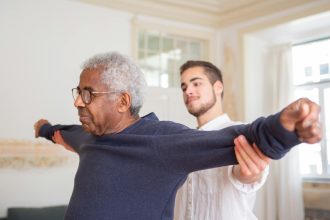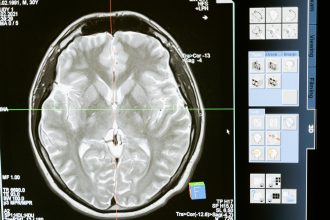Communication is one of the most powerful human abilities, but it is also one of the most vulnerable to brain injury. Survivors may struggle to speak, understand, read, or write, making it difficult to connect with loved ones or navigate everyday tasks. Others may be able to speak clearly but find that their thinking and memory make conversation confusing. For many, these changes are some of the most frustrating aspects of recovery.
Speech and language therapy (often called speech therapy) is a vital part of brain injury rehabilitation. It focuses not only on rebuilding speech and communication but also on swallowing, cognition, and social interaction. Whether challenges are mild or profound, therapy provides tools and strategies that help survivors be heard, understood, and confident again.
How Brain Injury Affects Communication
Brain injuries can disrupt communication in many ways. Some survivors develop aphasia, a condition that affects the ability to understand or produce language. Others experience dysarthria, where muscle weakness makes speech slurred or unclear. Still others face cognitive-communication disorders, where difficulties with attention, memory, or problem-solving interfere with everyday conversation.
Beyond speech and language, swallowing problems—known as dysphagia—are common after brain injury. This can make eating and drinking dangerous if food or liquid enters the airway. Speech-language pathologists (SLPs) play a crucial role in treating this issue as well.
The Role of the Speech-Language Pathologist
Speech-language pathologists are highly trained professionals who assess and treat these communication and swallowing challenges. They begin with detailed evaluations to determine which areas are affected and how severely. From there, they create personalized therapy plans that may include language exercises, muscle-strengthening techniques, and strategies to support cognitive skills.
Therapy often starts in the hospital and continues in rehabilitation centers, outpatient clinics, or even at home. Sessions can involve practicing words and sentences, strengthening oral muscles, using memory strategies, or learning alternative communication methods. Over time, the goal is to help survivors communicate as effectively and independently as possible.
Therapy Approaches and Techniques
The techniques used in speech therapy vary widely depending on the survivor’s needs. Some may spend time practicing word retrieval or sentence formation, while others focus on speech clarity and breathing control. For those with swallowing difficulties, therapy includes exercises that strengthen the muscles involved in eating and strategies to reduce choking risks.
Cognitive-communication therapy helps with higher-level skills such as organizing thoughts, staying on topic in conversation, or remembering instructions. Many survivors benefit from augmentative and alternative communication (AAC), which includes tools ranging from simple picture boards to advanced speech-generating devices.
Technology is playing a larger role in therapy as well. Apps, tablets, and computer programs now provide interactive exercises that can be practiced outside of formal sessions.
Impact on Daily Life
Improvements in communication skills have ripple effects across all areas of life. A survivor who can clearly express needs feels less isolated and more in control. Families report reduced stress when conversations become easier, and employers or teachers can better accommodate survivors when communication is effective. Even small gains—such as being able to order food at a restaurant or greet a neighbor—can have a profound impact on confidence and independence.
The Emotional Dimension
Loss of communication can be devastating, and frustration is common. Survivors may withdraw socially if they feel embarrassed by speech difficulties. Families, too, may struggle with the loss of familiar patterns of conversation. Speech-language pathologists address these emotional aspects by encouraging realistic goals, building confidence through practice, and involving families in therapy sessions.
In many cases, therapy becomes as much about rebuilding identity and connection as it is about practicing speech.
Caregiver and Family Involvement
Families play a crucial role in speech and language therapy. Caregivers can reinforce strategies at home, support practice with patience, and learn to communicate more effectively with the survivor. Simple adjustments—such as speaking slowly, using shorter sentences, or giving extra time for responses—can make conversations more successful.
By working together, survivors and families create communication environments that support recovery rather than increase frustration.
Long-Term Progress
Recovery of communication is often a long journey. Some survivors regain most of their skills within months, while others continue therapy for years. Even when full recovery is not possible, therapy provides strategies and tools that make daily life easier and more fulfilling. Importantly, communication improvements often continue long after the initial rehabilitation phase, especially when survivors remain engaged in therapy and practice consistently.
Conclusion
Speech and language therapy is a cornerstone of brain injury rehabilitation. It addresses not only speech and language but also swallowing, cognitive skills, and social communication. With professional guidance, consistent practice, and family support, survivors can rebuild the ability to connect with others, express themselves, and participate fully in life.
For many, regaining the power to communicate is one of the most meaningful milestones in recovery.







